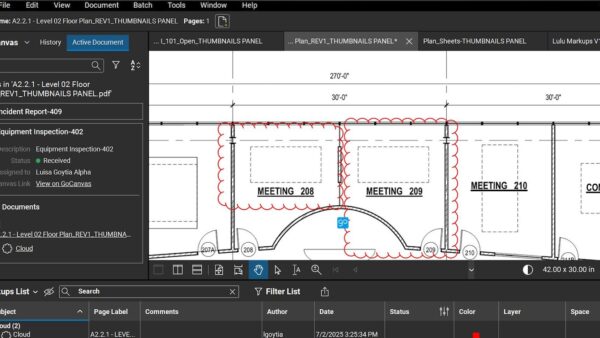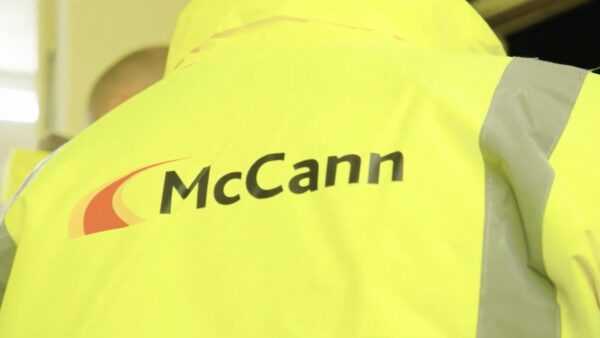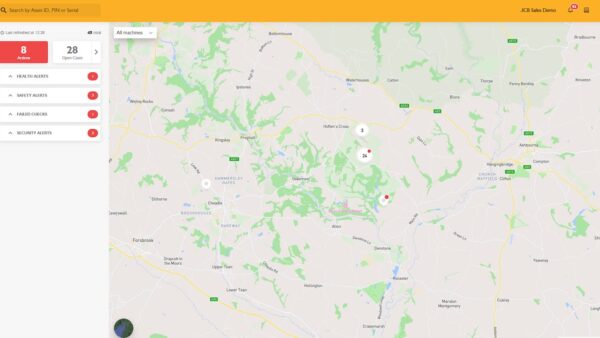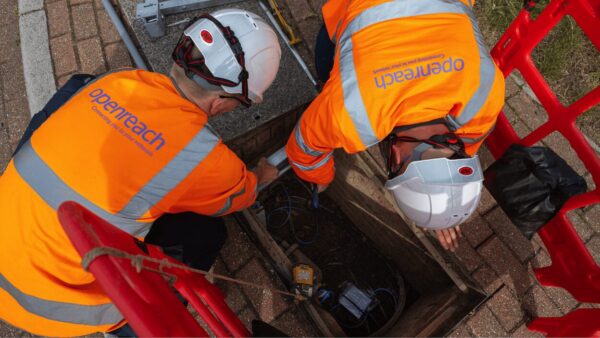
A shake-up of building control should include harnessing digital technology to automate compliance, streamline the process and improve results, according to Nick Nisbet and Thomas Beach.
Not since the introduction of privatised approved inspectors in 1984 has building control seen so much change. In the past 18 months, a new body – the Building Safety Regulator (BSR) – has been put in place to oversee both public and private building control services. The BSR is also acting as the building control authority itself for higher-risk buildings.
Alongside this are new training and competence requirements and an emphasis on checking compliance rather than helping developers and their teams navigate their way through it.
And there could be more change to come. In April, the government set up a new panel – the Building Control Independent Panel – chaired by Dame Judith Hackitt, to conduct a comprehensive and independent review of the current building control system in England.
The terms of reference have yet to be published, but they include considering conflicts of interest and the influence of commercial incentives, possibly with a view to total nationalisation.

“Singapore and Dubai authorities, for example, are pushing on with automating compliance checks, but there is little appetite to do so in the UK.”
Alongside this scrutiny of structures and ownership, the profession has also been undergoing, for some time, a struggle on the operational side. There are not enough building inspectors with the right skills, and overwork and underpay are encouraging early retirement. Building control organisations are finding it hard to replace retirees with new entrants.
Faced with an urgent need to get through heavier workloads, while operating more rigorously and with fewer people than before, it’s no surprise that questions are being asked about whether building control can work more productively.
The need to automate
Enter Nick Nisbet and Thomas Beach. Beach is a Professor of Built Environment Informatics at Cardiff University. Nisbet has helped develop digital data standards in the built environment for more than 20 years: his latest endeavour has been heading up the transition of British Standard PAS 1192, part 4 and part 6 into the ISO equivalent in the 19650 suite. The pair have been collaborating for more than 12 years on automating regulatory compliance.
“Over all that time, we’ve been working on a variety of funded and unfunded pieces of work, including a programme of research as part of a group of researchers called DCom or Digitise Compliance Network,” explains Beach. This was initially funded by the Centre for Digital Built Britain.
The research, which was completed in 2019, showed that it was technically possible to automate compliance and that it worked well, resulting in a six-year roadmap, DCOM 2025.
The document states: “This is a plan for the next six years that brings the UK to the verge of mass industrialisation of automated compliance checking. This is aligned with the long-term UK government industrial strategy targets set in Construction 2025, as well as providing a solution to support recommendations in the Hackitt review, which the UK government has committed to implement.”
Difficult to police
The publication also states: “The current system is extremely difficult to police. It lacks resources, there are too many compliance departures and ambiguous regulations and statements, as well as untethered and unauditable decision-making processes. The list is relentless. The recent increase in information and data maturity, owing to the adoption of processes such as BIM and supporting standards, means automation of compliance checking is becoming feasible.”
Beach was then funded by the Construction Innovation Hub to work with software developer Solibri and Nisbet to further develop the concept, ready for its deployment to industry to check compliance with the fire safety regulations, accessibility regulations and the energy efficiency regulations. “We gathered industry requirements and built software that would be suitable for that, testing it on real buildings,” he says. “Then we compared results produced manually with those produced through the automated compliance process, and found that the automated compliance checking worked very well.”
That was in 2022. Given technical advances have come thick and fast since then, why has automated compliance not even left the starting blocks yet?
Automating compliance in Helsinki
Finland is a leader in automating compliance checking for construction projects, particularly using BIM and open standards. The RAVA3Pro project, led by the City of Helsinki, has made this practice nationwide, enabling municipalities to use Solibri’s technology for automated model checking of IFC models. This approach streamlines the building permit process and reduces manual checks.
Finland has embraced BIM for building permits, allowing designers to submit IFC models for automated checking.
Solibri is a key provider of the technology and expertise for automated compliance checking in Finland, particularly through the RAVA3Pro project and in cooperation with online portals like Lupapiste. Designers can upload their IFC models to platforms like Lupapiste and receive feedback on potential design issues, enabling them to address these issues early in the design process.
Stagnation
The truth is that automated compliance is racing ahead, but only in other countries. “Singapore and Dubai authorities, for example, are pushing on with automating compliance checks, but there is little appetite to do so in the UK,” says Nisbet. Ironically, it is he who devised the rules-based coding systems on which the compliance checking is based, including the system used in Singapore.
Beach adds: “The unfortunate thing is, as with many government-funded grant schemes, the grant came to an end, the Construction Innovation Hub closed down, and everything stopped. Generally, at this stage government would expect industry to fund it.”
The work that Beach and Nisbet have been doing with Solibri has also been influencing developments in Finland and Estonia, which are much further advanced than the UK, they say. In Finland, Solibri is developing software that construction and design firms can use before they submit their schemes to building control, and that regulators can also use to do the checking. Beach says it is working in Finland and Estonia as part of an EU project, and their governments are funding Solibri to develop it for them.
“It all stems from the political will to make this happen,” he says. “The problem in the UK is down to the way building control works. With the checking done at the local authority level or by approved inspectors, they are the ones who have all the expenses associated with assessing applications. The cost of assessment does not even appear on the radar of central government, because they’re not responsible for it. All they do is produce the regulations.”
European standardisation
Meanwhile, Beach has been trying to develop a standardised approach or framework of software tools that would work across Europe to achieve the same goal. “It’s a bit like a toolbox of software components that you could put together in slightly different ways to suit the different compliance systems of different countries.” This research is part of a three-year EU-funded project, Accord, which builds on the D-COM project.
In their D-COM and Accord research, Beach and Nisbet developed a representation of building regulations in a machine-readable fashion. For commercial reasons, Solibri has developed its own proprietary format of rules. The good news is that the Accord project has developed a representation of ‘regulation coding’ that can be imported into Solibri.
That is a significant step, says Beach, because it means BIM files created using different software should in future be uploaded into Solibri and the compliance checked.
Manual control

“The problem in the UK is down to the way building control works. The cost of assessment does not even appear on the radar of central government, because they’re not responsible for it.”
There is a long way to go to get anywhere close to that in the UK. One of the main problems is that building control documents are currently submitted in pdf form, so even if all the design work is produced in BIM, these files are used to produce 2D pdfs, which are then submitted electronically, explains Nisbet.
He also notes that planning has its own government-funded research and a programme of work to help harness digital technology for the planning system, so why not the same for building control?
“There is a lot of the effort is going into plan making, and supporting local authorities in developing planning, local planning regulations and maps, and digitising the process of consultation on those plans, but relatively little effort has gone into thinking about digitising either advice for applicants or digitising the compliance checking, for building control.”
Gateway 2 delays
The huge delays being experienced by applicants of higher-risk buildings at Gateway 2 are a clear example, says Nisbet, of how current methodology is putting huge strain on the system. Some schemes are being held up for months before they can start on site.
“One of the reasons that the government should be interested is that it is trying to use construction as an economic lever. It reduces the point of investing money into construction if it takes nine months or a year to get the effect that you want,” says Nisbet. “So there is a strong economic case for accelerating the approvals process, both from the point of view of applicants, who might be householders, or developers or industry. There is a strong case, I think, for government to allow more digital compliance checking to improve the responsiveness of the industry.”
He points out that even the implementation of the Building Safety Act and the requirements for a digital golden thread have not been particularly digital. “Some of the opportunities have been missed there, too.”
What happens next?
What would they like to happen now? “Ideally, we would get a message both to large client bodies and the government that such automated systems exist and can be tailored to specific regulations relatively cheaply.”
Nisbet acknowledges that it would require a huge regime change, starting with allowing applications to be sent in as BIM files using the IFC schema.
Given the advancing sophistication of AI, one wonders where all this fits in with automated compliance. “It’s a debatable question whether rules-based systems count as AI or not – we have been using it to an extent to write the rules-based system. But I think nowadays, most people see AI as the thinking in large language models. And the issue there is that different AI models cannot be trusted to come up with the same answer.
“If people invested in it, and we had a great deal of R&D done, we probably could achieve a reasonably good level of accuracy, but it would all be around the non-technical challenges. Whether people would trust it is the biggest thing,” observes Nisbet.
“When you’re dealing with a rule-based system, you’ve got the full audit trail of that compared with AI systems. But the other criticism that people often level at automated compliance checking is that it will remove all innovation from the sector, and the innovative buildings won’t get approval by an automated system because they comply, maybe with the spirit of the regulations, not the letter of them, or they comply in some unusual way.”
He acknowledges the point, but is sanguine. ”The answer to keeping the system safe lies in keeping the human in the loop.”















